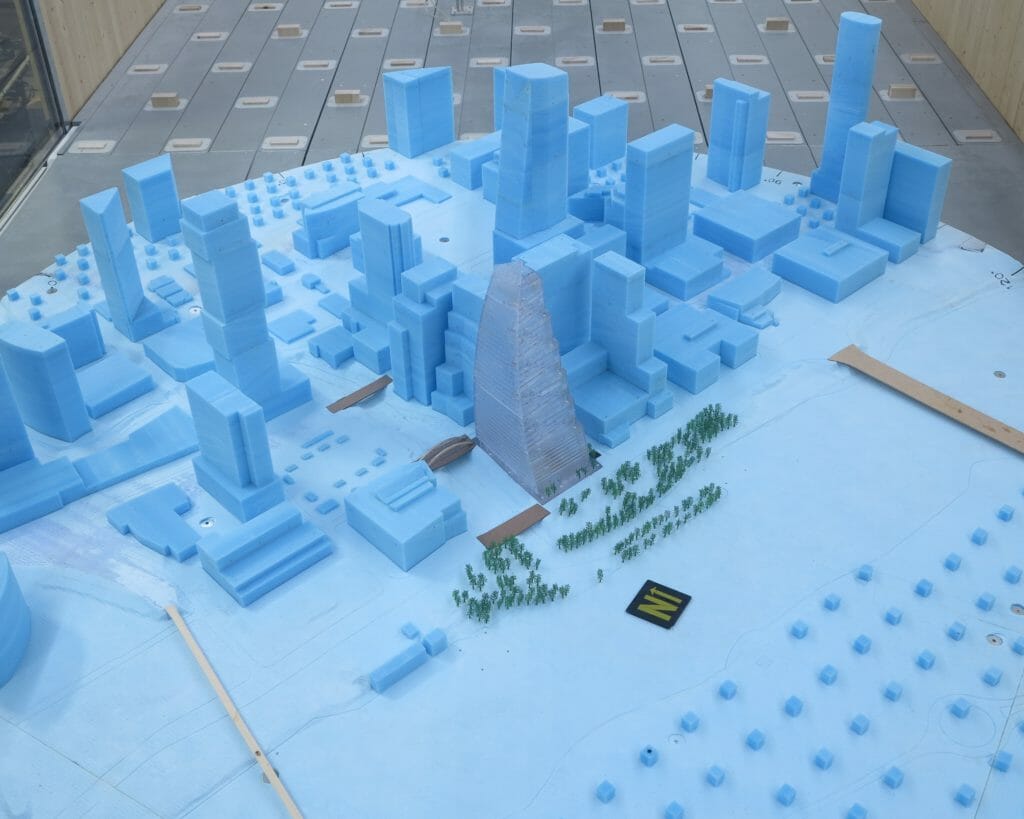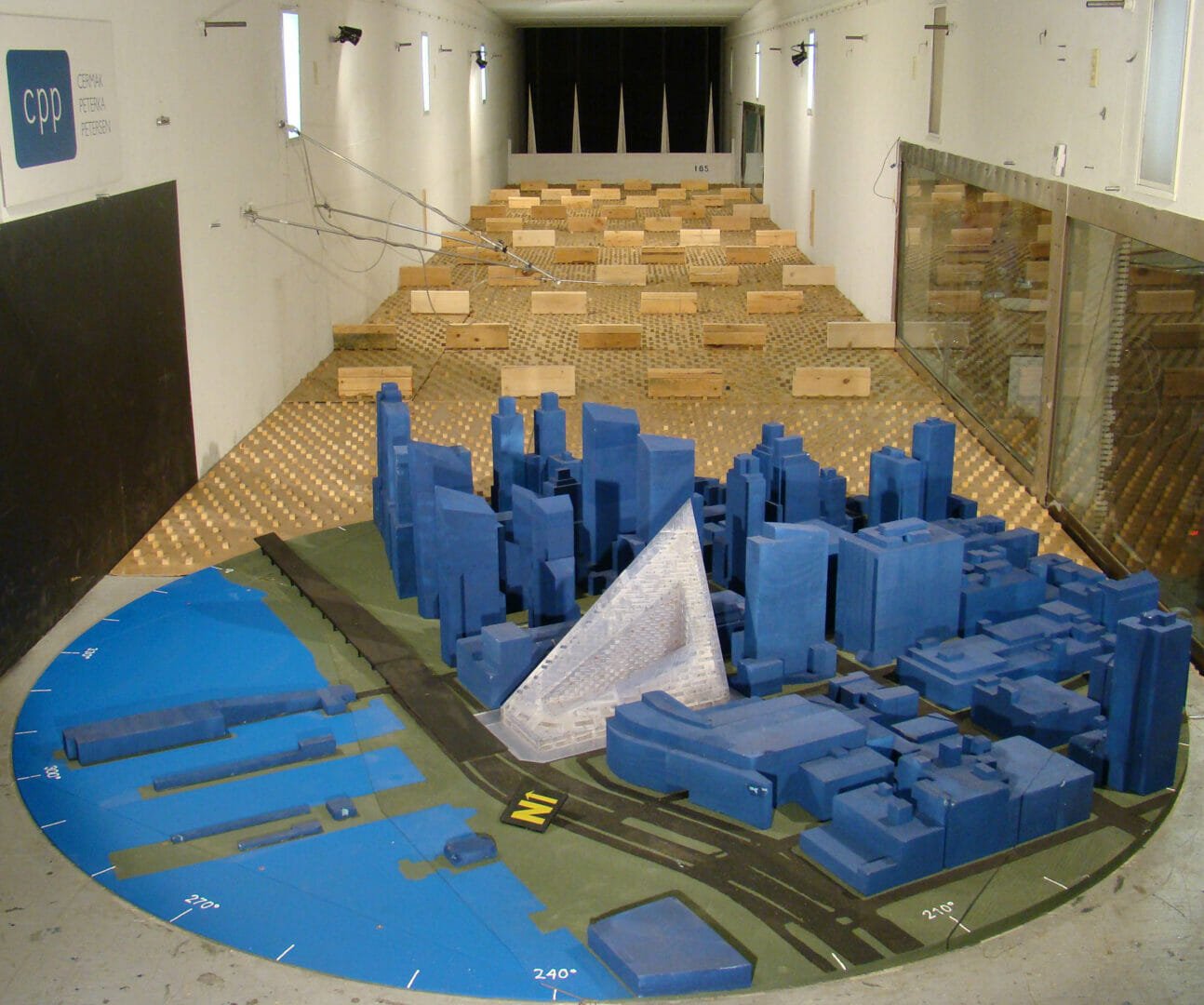News
Building in miniature

When guests visit CPP’s facilities for client updates or tours, our small-scale wind tunnel models are usually major highlights. From structural engineers responsible for a single part to urban planners overseeing an entire city plan, everyone seems to enjoy seeing their work in miniature.
And while these scale models may look like playthings, they’re actually sophisticated pieces of equipment that we carefully design to solve some of the world’s most challenging engineering problems. Here’s how we miniaturize the world for our wind tunnels.
- A client supplies an original digital model. These are digital computer models that describe the product or structure we’ve been asked to evaluate.
- Our experienced drafting team turns the original model into a simplified digital model by filling minor gaps, merging similar features, and reducing complex elements to manageable pieces.
- The drafters next scale down the simplified model by a power of 10 to 500, depending on the requirements of the experiment we’re conducting. This gives us a scaled digital model.
- The scaled digital model is then modified to include features that allow us to take measurements. This instrumented digital model may include pressure taps, coupling adapters for a force measurement systems, or other sensors that give us the information we need.
- Pieces of the scaled physical model are then fabricated according to the final specifications in the

Wind tunnel testing the scaled physical model of VIA 57 West | CPP, Inc., Fort Collins, CO. electronicmodel. These parts are built up from an epoxy resin in a 3-D printer, or they’re cut from pieces of wood in a CNC (computer numerical control) machine.
- Finally, our technicians carefully assemble the individual parts of the scaled model and build the test article we’ll use in the wind tunnel. Pressure taps are fitted with tubing and connected to our pressure measurement system, and wooden models are connected to a high frequency-force measurement device.
Our drafting team, technicians, and engineers work together to design a test article that is complex enough to capture all of the data we need, but simple enough to stand up to the rigors of testing.
With our resources and testing capabilities, CPP can deliver the results you need in a timely, affordable manner. Contact us today to learn how we can help make your next project safe, comfortable, and efficient.
